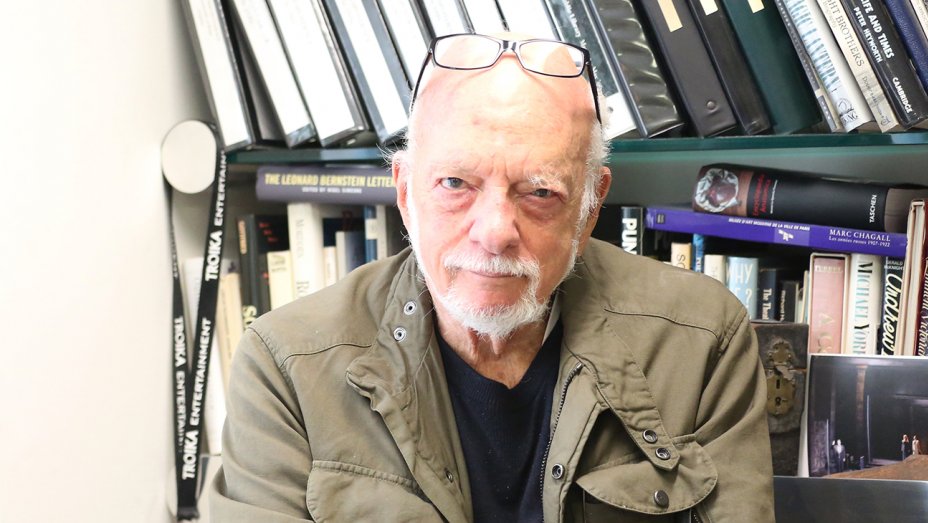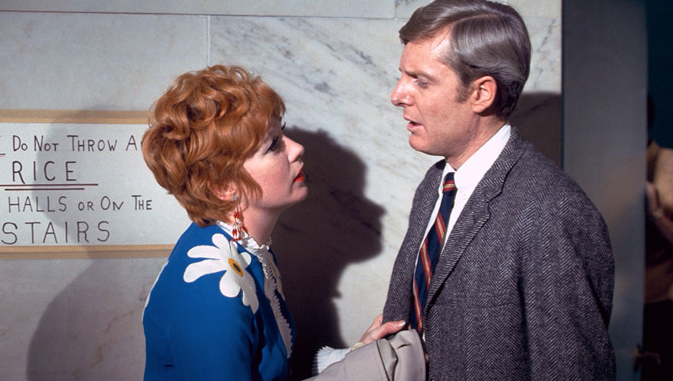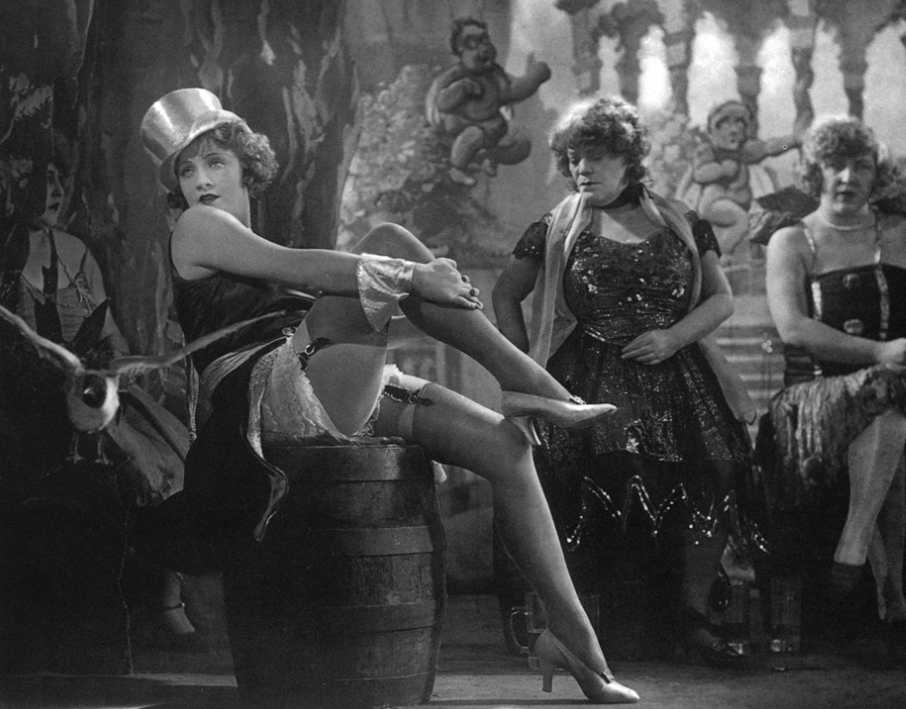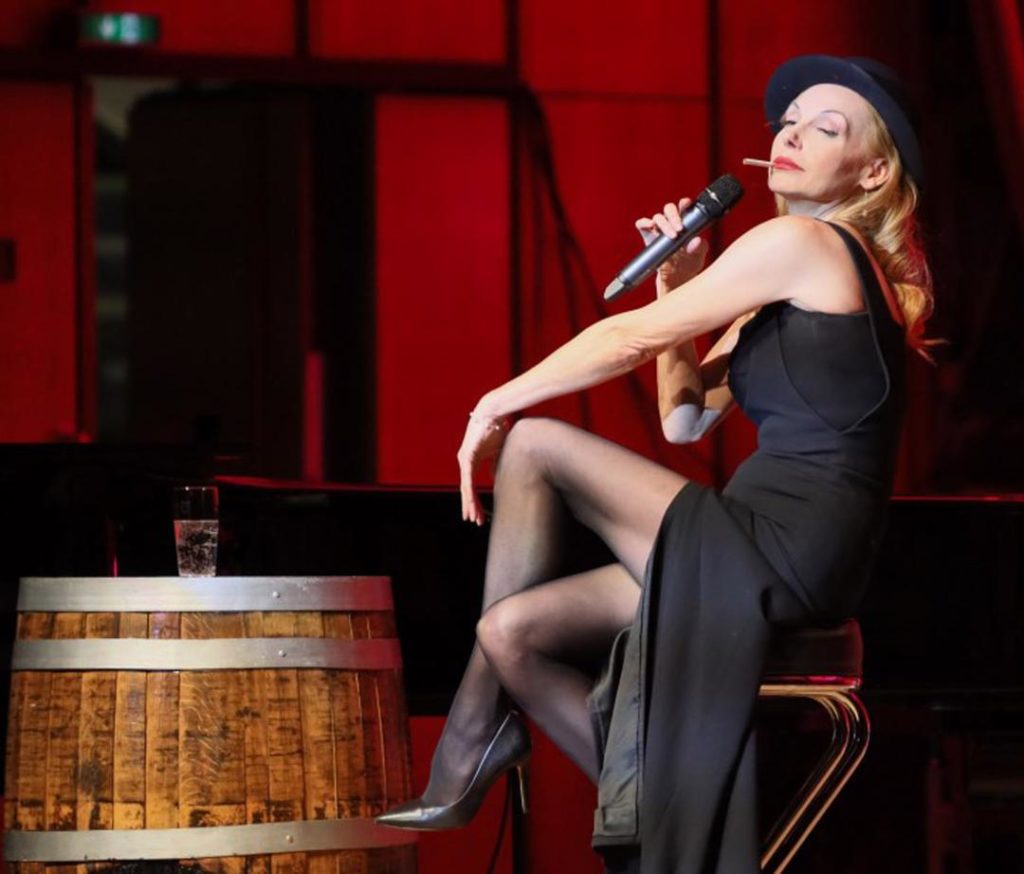An Amusement Column
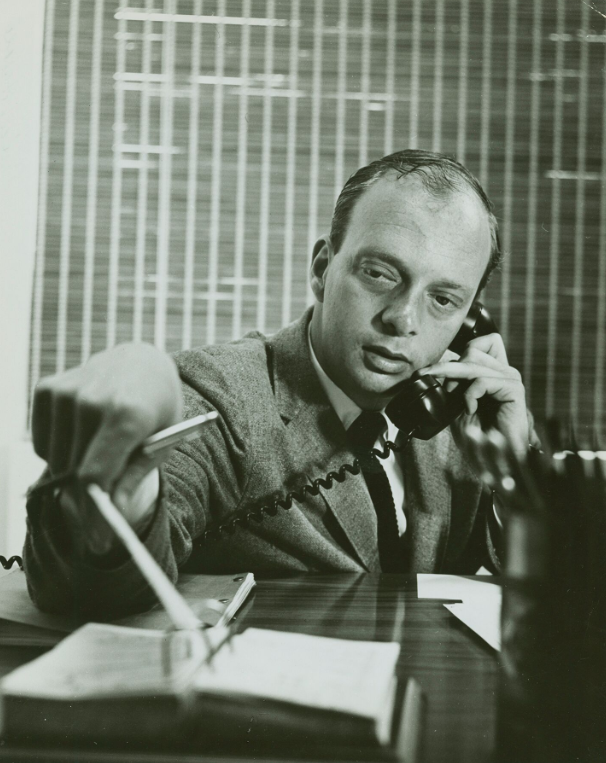
Young Hal Prince – Photo by Van Williams-Billy Rose Theatre Division, The New York Public Library for the Performing Arts
by Harry Haun
A PRINCELY POSTSCRIPT: The last we will see of Harold Prince is a talking-head moment in Fiddler: A Miracle of Miracles, the Fiddler on the Roof documentary, but it sums up the man perfectly: He exits with a classy quote that shows he knew when to “just” produce and when to leave the directing to others. She Loves Me was his first directorial hit, so its grateful songwriters, Jerry Bock and Sheldon Harnick, came to him—score in hand—with their next show to do, Fiddler on the Roof. “In order to understand the show—since I clearly did not understand it when the guys offered it to me—Sheldon gave me a book on shtels, so I signed on to do the show,” he recalls. “The guys asked me to direct it originally, and I said, ‘I’m the wrong guy.’ Maybe Jerry Robbins should do it. My thinking was very clear: I thought it had to have universality, and his incredible adroitness at movement [offered that]. . . . That unlocked everything that the show needed. It was like an education for people like me about what that society was like, what a shtel was like.” . . . Prince left a lot behind—enough, in fact, for an exhibit at The New York Library’s Lincoln Center branch, starting Sept. 18. “He was really excited about the exhibition, if a bit abashed that so much attention was being paid to him,” recalls the exhibit’s curator, Doug Reside. “I walked him through, verbally, what I hoped to do, and he thought it was very exciting and theatrical. Hal really gave us a lot of freedom to explore his career and his life in whatever way the archive led us. He was very, very hands-off. When I presented my plan to him, it covered most of his career. I think anything that he was hoping would be in the exhibit was already there.” . . . The exhibit begins with an attempt to recreate the office Prince shared with Bobby Griffith when they were producing Tenderloin, The Pajama Game, Fiorello! and Damn Yankees. “In that office we have very high-quality reproductions of the paperwork that really tell the story of a producer beginning his career, with very little money often. He’s talked about this in interviews and in his autobiography, trying to raise money by passing around a bag of chips and a tiny bit of Scotch to potential investors. You can see that kind of scrappy innovativeness in his entrepreneurial spirit. In the paperwork, he gets Singer Sewing Machines to donate sewing machines for The Pajama Game and gives a pajama company promotional rights to say they’re in the pajama game.” . . . The Phantom of the Opera’s boat, fresh from a tour of Australia, has docked at the exhibit, and set pieces from 2017’s Prince of Broadway, which had been in storage in Connecticut, were brought down to the library to be viewed up close. “Our designer, Caitlin Whittington, is really fantastic at positioning things within the gallery,” brags Reside. “She says it’s the largest number of artifacts we’ve had in an exhibit.”
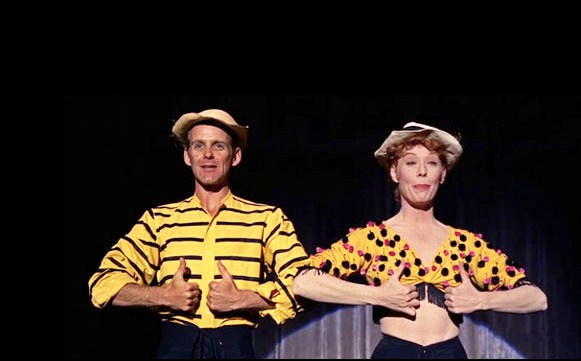

Bob Fosse and Gwen Verdon in “Damn Yankees” (their own screen dance together): Indeed, “Who Got the Pain?”
SPOILER(S) ALERT: How long have you wanted that happy ending for Charity Hope Valentine? Back as far as 1966? That’s when Gwen Verdon Fosse played her in her husband’s Tony-nominated Broadway musical. Or maybe nine years farther back than that? That’s when Giulietta Masina Fellini played Cabiria (Italian for Charity, presumably) in her husband’s Oscar-winning Best Foreign Language Film of 1957, Nights of Cabiria ? . . . . Well, want no more. Film Forum will be showing Shirley MacLaine’s Sweet Charity Oct. 13-14 with both filmed endings tacked on. And let the record show: Bob Fosse’s vision/version prevailed. It was the producers who wanted the other ending, but they caved when he convinced them how corny it would be. . . . Lee Roy Reams made his film debut with Fosse and Ben Vereen in Sweet Charity and, cinematically, stopped there. The only big-screen Reams you’ll ever see is the one dancing “The Rhythm of Life” and “Rich Man’s Frug” in this film, but he thinks of it as “one of the best jobs I ever had. We were just a bunch of Broadway gypsies sipping coffee and eating donuts, and Fosse was just wonderful, very creative. We felt we were doing something important.” . . . Not only did Verdon recommend MacLaine for her part, she stuck around and (as an uncredited assistant director) coached her in it. “I couldn’t watch it,” Reams admits. “It was so hard to watch because there was the person who is the character and Shirley trying to imitate her, which was an imitation.” The demands of a star part weighed heavily on MacLaine so she didn’t mix and mingle, and Reams recalls her distance. “We never got to know her, but, hey, she had a lot on her mind. I was just surprised–her being a gypsy, supposedly–she didn’t feel closer to us. Gwen did, of course.” . . . Fosse/Verdon, which will be contending Sept. 22 for 17 Emmys (including ones for Sam Rockwell’s Fosse, Michelle Williams’ Verdon and Best Limited Series), was done with the approval of their daughter, Nicole Fosse. “I thought it was really brave of Nicole—and very therapeutic,” says Reams. “She lived it. If anyone would know the truth, it would be Nicole.” . . . Yes, he dislikes the negative one-note portrayal of Fosse. “That thing happens when you’re doing two lives. Bobby as a character did not come off in a great light—the womanizing, the drug problems—but that was the man, and that’s the man Nicole saw.” . . . A documentary that celebrates Verdon’s life and art (sans the thorns and mishages of Fosse/Verdon) will premiere Sept. 20 on Amazon Prime Video, titled after a Redhead song, Merely Marvelous. The subtitle is spot-on, too: The Dancing Genius of Gwen Verdon. She did, after all, amass a mess of Tonys: four in six years–for Can-Can, Damn Yankees, New Girl in Town and Redhead. Testimonials come from Chita Rivera, Tab Hunter, John Kander, Harvey Evans, Charlotte d’Amboise–and her son, daughter and nephew. “There are home movies and lots of never-before-seen footage of her on Broadway,” promises Ken Bloom, who wrote, produced and directed the movie with editor Chris Johnson. “It’s a love offering.”
MARLENE RIDES AGAIN: For 61 years and 57 films, Marlene Dietrich made a science of glamour and held the line against aging better than anybody. After she finally threw in the towel in 1978, she refused to be photographed or attend international events saluting her or even be seen in public. As the world’s most famous recluse, she occupied and never left the fourth floor of No. 12 Avenue Montaigne in Paris. If old friends from Hollywood called her—brand names like Douglas Fairbanks Jr., Van Johnson, even Billy Wilder, who brought out the best in her (A Foreign Affair and Witness for the Prosecution)—she’d insist she was the maid and tell them “Miss Dietrich is indisposed” in that unmistakable voice of hers. . . . In her last film—1984’s Marlene, an Oscar-nominated review of her life and career—she was, literally, sight unseen, having secured from the director (her Oscar-winning co-star in Judgment at Nuremberg, Maximilian Schell) the promise that she would only be heard and never photographed as she looked then. He brought off this impossible feat by photographing a lot of furniture and leaning liberally on archival footage. . . . “The new Marlene Dietrich” didn’t hit Paris until 1988. “She was 87, and I was 24, playing Sally Bowles in Cabaret,” remembers Ute Lemper, who picked up that Dietrich appellation from the critics and, subsequently, the Moliere (the French Tony) for her Sally Bowles. “I thought it was inappropriate to compare me to such a legend, so I wrote her a letter. A month later, she called me, and we had a three-hour conversation. Mostly, she spoke. It was more like a monologue. She didn’t like questions. She didn’t like to be interviewed.” . . . Now, 32 years later, Lemper finds she has turned into Dietrich for a show she has written called Rendezvous with Marlene. It’s getting a five-performance test drive at the York Theater Sept. 18-22 for prospective producers and not (just yet) for critics. “I’m showcasing it now to see if we can actually move it on to a proper production with choreography, with a director, with further development.” It won’t be a cabaret act—she’s already done her “Dietrich’s Greatest Hits”-–this dramatically extends that. “It’s like a theatrical piece with music, I’d say. I am definitely acting Marlene. She’s rather un-centered telling her story as an older person.” . . . In 1992, after the fall of the Berlin Wall, Lemper was hired to recreate Dietrich’s career-making role of Lola-Lola in a Berlin production of The Blue Angel. “Ten days before our opening, Marlene died. She’ had told me in that phone conversion she wanted to go back to Berlin one more time—she said it in a rather crude way—‘dead, in a coffin.’ She wanted to be buried beside her mother in a cemetery there. I went to the funeral. There was still an outcry against her and stink-bombs in the air. The Germans had treated her as a traitor—she had been an American soldier in World War II, and they didn’t want her back. The mayor tried to schedule a celebration of Marlene, and it had to be cancelled because the neo-Nazis threatened a disturbance.” . . . Lemper believes Dietrich was a woman of the future, then and now. “What she dealt with—the issues of nationalism, the right-wing movements, the long shadows that the Nazis had cast upon her life—it’s a story that needs to be told today, and it’s really my mission to do so.”
HOW TO HIT THE RIGHT NOTES: So much realistic-looking white wine gets sloshed about in the 90 minutes of Harold Pinter’s Betrayal that you could get a contact high. The tipoff that it’s not real lies in the uber-real performances of Tom Hiddleston, Zawe Ashton and Charlie Cox, and they fall somewhere between pristine and impeccable. What they’re imbibing in is Ye Old Prop Master’s secret, but it’s changed from what it was in London. They couldn’t duplicate it here and had to go with the low-price spread. . . . How refreshing to attend a movie where the audience doesn’t stampede for the exits during the credit crawl. Of course, the crowds who came to Close Encounters of the Third Kind last Wednesday and Thursday at Geffen Hall were cautioned at intermission to stay seated “as a courtesy” to the New York Philharmonic, who gave John Williams’ score as robust a rendition as you would want. They got up anyway, rising as one to give the orchestra a well-deserved standing ovation. . . . The conductor, Richard Kaufman, told the audience he’d played violin on many a John Williams soundtrack session, “including this one.” . . . Incredibly, 42 years have slipped by since Steven Spielberg dropped this sci-fi spectacle. Today, it looks—and plays!–like the ultimate flying-saucer flick (second place: 1951’s The Day the Earth Stood Still, also a pacifistic affair). Williams composed the five-note combination that connected the aliens and the earthlings. He put in for two more notes so he would have a better shot at a melody, but Spielberg nixed the notion. He said he was not interested in a melody. He wanted a signal–“a doorbell”– not a melody. They went through between 100 and 300 five-note variations before finding an eerie one to their liking: D-E-C-C’-G. (Don’t try this at home.)



